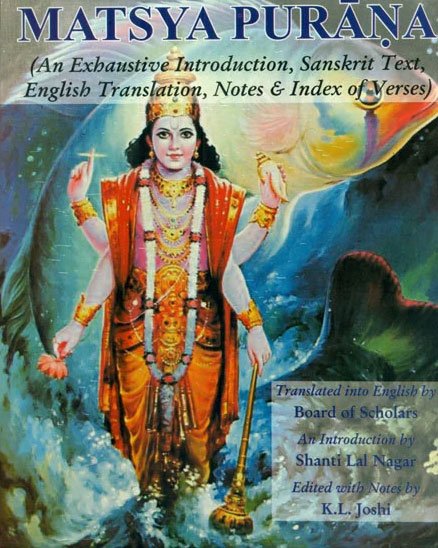The Matsya Purana (critical study)
by Kushal Kalita | 2018 | 74,766 words | ISBN-13: 9788171103058
This page relates ‘Paurava Dynasty’ of the English study on the Matsya-purana: a Sanskrit text preserving ancient Indian traditions and legends written in over 14,000 metrical verses. In this study, the background and content of the Matsyapurana is outlined against the cultural history of ancient India in terms of religion, politics, geography and architectural aspects. It shows how the encyclopedic character causes the text to deal with almost all the aspects of human civilization.
Part 2.2b - The Paurava Dynasty
One of the most illustrious kings of the Paurava line of the post Mahābhārata war period was Parīkṣita who was the son of Abhimanyu and grandson of Arjuna.[1] He ascended the throne of Hastināpura. His Kingdom constituted a glorious era in the history of the Pauravas. Parīkṣita was succeeded by his son Janamejaya.[2] After the death of Janamejaya the Kuru Kingdom was split up into several parts.
Janamejaya was succeeded by his son Śatānīka who was succeeded by his son Adhisoma Kṛṣṇa.[3] Nṛcakṣu was the sixth descendant from Parikṣita. In his tenure the capital was shifted from Hatināpura to Kausambi as Hatināpura was washed away by the Ganges.[4] The history of the Paurava Kings of Kausambi is still covered in obscurity.
A list of twenty three Kings who succeeded Nṛcaksu one after another as given in the Purāṇas included: Uṣṇa, Citraratha, Sucidratha, Susena, Sunita, Bṛṣṇimant, Medhāvin, Nṛpāñjaya, Durvā, Tigma, Bṛahadratha, Vāsudāman, Śatānika, Udayana, Vahīnara, Daṇḍapāni, Niramitra and Kṣemaka.[5]
The Kingdom of Kauśāmbi seems to have been annexed to Avantī by Pālaka, son of Pradyota. From the dynastic list of the kings in the Purāṇas it appears that Udayana of Vatsa, Pradyota of Avantī and Prasenjit of Kośala were succeeded each by four or five kings after whom their dynasties came to an end.
The Puru dynasty of Lunar race with 29 rulers comprising both Brāhmanas and Kṣatriyas with their capitals Hastināpura, Indrapraṣṭha and Kauśāmbi came to an end with Kṣemaka the last in the line.[6]
Footnotes and references:
[1]:
Ibid.,50.57; 273.65-72
[2]:
Ibid., 50.57
[3]:
Ibid., 50-65-67
[4]:
Ibid.,50.78-79
[5]:
Ibid.,50.79-89
[6]:
Ibid.,50.88-89
